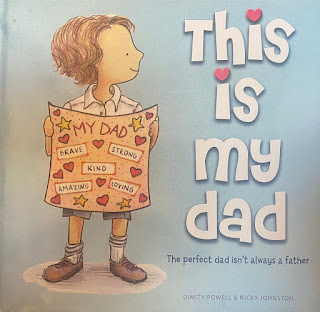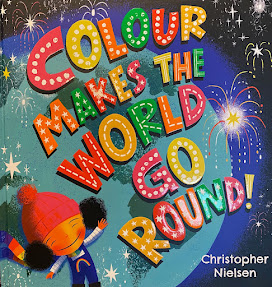This is timely because unpacking what 'Mindfulness' is can be confusing. It seems while many teachers talk about mindfulness, each does it for different reasons, and with different understandings of what it is, and how it helps. The concept can become distorted as teachers seek to manage their students.
Ask a group of teachers what mindfulness is and I suspect you will be given a number of different answers. Ask the same people why they believe in it, and again you will hear different responses. Even within this book, the two authors who contribute separate named author chapters, adopt slightly different approaches and emphases to one another. And I should say up front, I adopt a slightly different view in places to one or both authors.
The need to remove distractions
In chapter 1 Stephen McKenzie defines Mindfulness as a "state of simply being fully focussed on whatever we are doing". In other words, screening out distractions and "paying attention". But something which in essence is very simple, can become somewhat messier when people begin to try and overlay different philosophies and even faiths. I agree with the general position he adopts.
Removing distractions in life will always help people to focus, concentrate on tasks at hand, and pay attention. The great challenge we have though as teachers and parents, is the world is filled with constant distractions, which can quickly divert our attention. A book could be written on this alone!
For example, how many of us can allow messages to lay untouched on our phones, as they constantly invite us to check them? Or how often can WE sit still in contemplation and notice the world around us? I walk everyday along a beautiful river near my home, usually with my wife, but sometimes alone, or I ride my bike instead. You'd be amazed how often I see people walking through the beauty of the world in conversation on their phones. I see one young man every day, who doesn't speak or even look up! He is reading and searching with his eyes never leaving the phone screen; he is 'glued' to it. I have never seen him look up to see the sky, look at the water, hear and look at the birds everywhere, or the stunning sunsets. It amazes me that he hasn't run into something.
How might parents and teachers respond to such distraction?
There is much good advice in McKenzie and North's book, but I'd urge you NOT to over complicate the concept. Avoid linking it to philosophies and faiths to prescribe what it is. Buddhism and Hinduism are often linked to mindfulness, but I'd encourage teachers to avoid weaving aspects of separate faiths into your desire to increase mindfulness in your students.
Of course, if you are a teacher in a faith-based school, then this will influence how you and your students integrate faith with life. But mindfulness has great relevance for all, and need not be connected to religious worldviews to help our students. All teachers need to cultivate the ability to get to know their students on more than just a superficial level. This requires us to give them our attention by observing and listening to them.
Young children and teenagers need help in being able to screen out distractions in their world. As a parent, if they come back at you with "but Mum I concentrate on my phone every day", then they're missing the point. Our phones can be used for more than texts and a few favourite sites. We can read novels on devices, learn new things, pursue interests and grow in knowledge. But sitting and reading every aspect of our friends lives, including what they're wearing, seeing, listening to, who is 'hot' and so on, is not 'mindfulness'.
Parents also need to demonstrate to their children what it means to shut out distractions and 'noise' in the world. We need to be examples of how we manage such distractions caused in part by devices like phones. It's more important to help our students to manage time and try to listen better to one another.
The need for key models and mentors in life
Parents should be the first of many models in children's lives who demonstrate mindfulness. For example, I'd encourage all families to share as many meals as possible together without always having devices next to us, or the television in the background. All of us need models who help to shape what we value and how we negotiate the challenges of life. Angela North makes a great comment about this:
"We all need just one person in our childhood who truly sees us - so that we feel deeply heard, understood and loved".
Of course, hopefully children will have more than one model, from different parts of their lives. I completed primary school in a family with two alcoholic parents. Not surprisingly, I was in trouble a LOT at school. But in 4th grade I was fortunate to have a teacher who saw beyond the grubby neglected kid, and set out to teach me, care for me, and seek things for me to do that challenged and inspired me. He was one of the people who helped to turn my life around.
Above: 5th Grade with Mr Campbell (4th from Left back)
As teachers, how well do we know the children we teach? And parents, how well do we know our teenage children? Do we try to spend time with them? Can we have significant undistracted conversations with them? Let's be honest, the problem isn't just simply with our children. We need to work on mindfulness ourselves, while modelling and helping our children early in life (birth to 15+). If we wait till they're 15, I'm afraid it's often too late. Summing up, parents don't forget to examine your own life to consider when you are distracted as well.
A final challenge. What is your role?
I like many of the ideas in 'Mindfulness at Play', but please don't read it simply looking for new strategies to enable you to make teaching easier. Nor skim read it looking for six tips for making tough children more attentive and better behaved. Sure, there are some games that calm children down, or activities to help them focus. But nothing will help us as teachers more than simply knowing every one of our students better. What makes them tick? What do they like or not like? Are there things that excite them, and what are their lives like outside school...? There are many great ideas in the Resources section of 'Mindfulness at Play'. By all means use some of them, but don't use them keep them busy, or make your life easier. Rather, use them as the authors suggest to help your students:
• Pay attention
• Increase connection to their world
• Enjoy time with one another
Finally, and most important of all, as teachers get to know your students better. What are their dreams, hopes and aspirations? How well do you know them? How can you have an impact on their well being and futures?






































